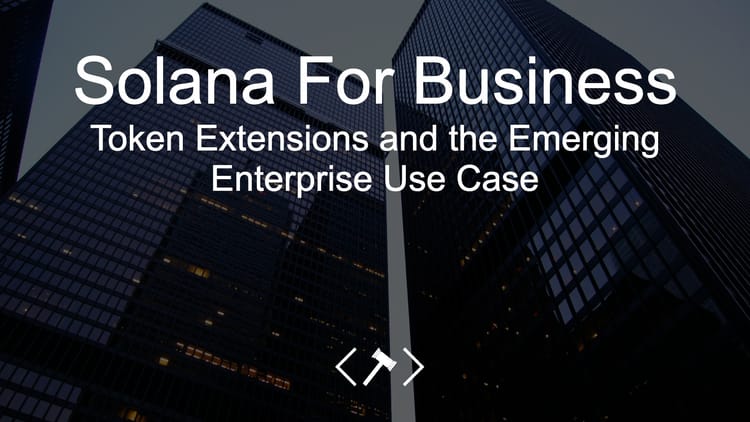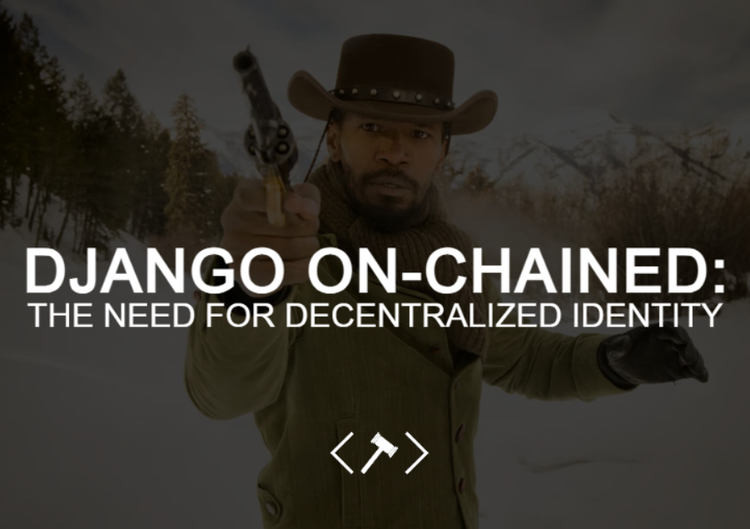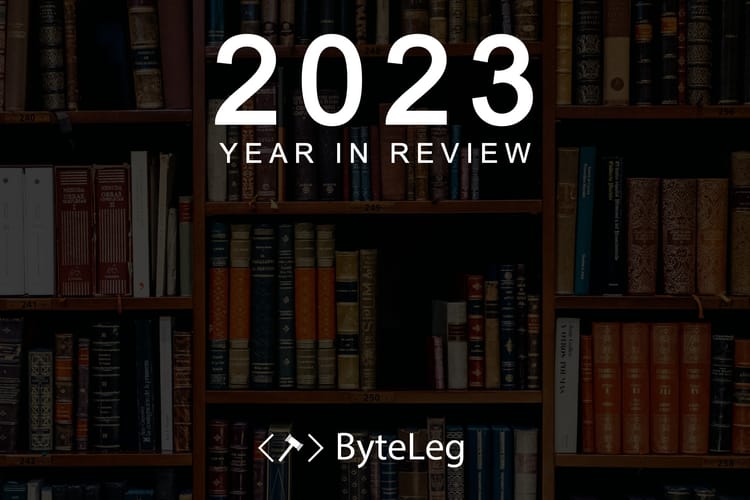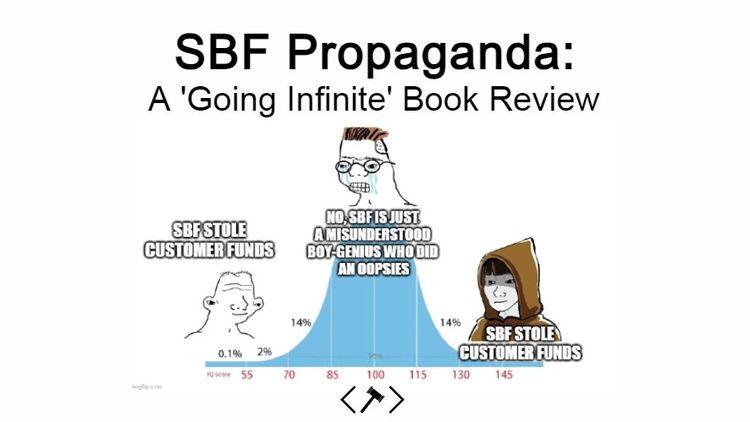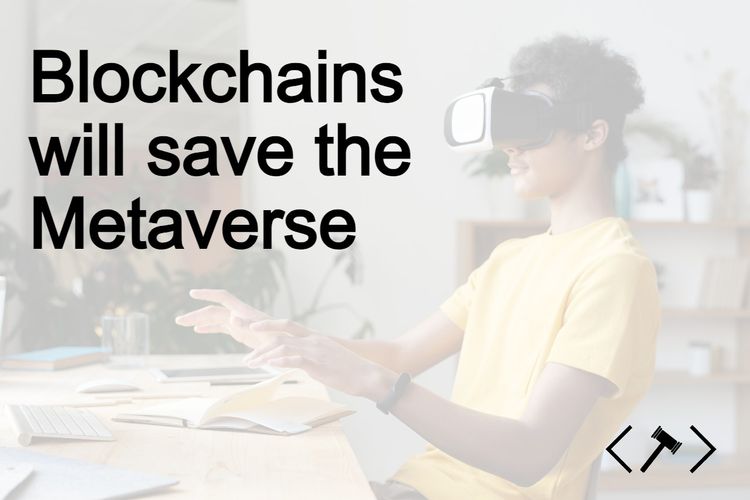The Exponential Age
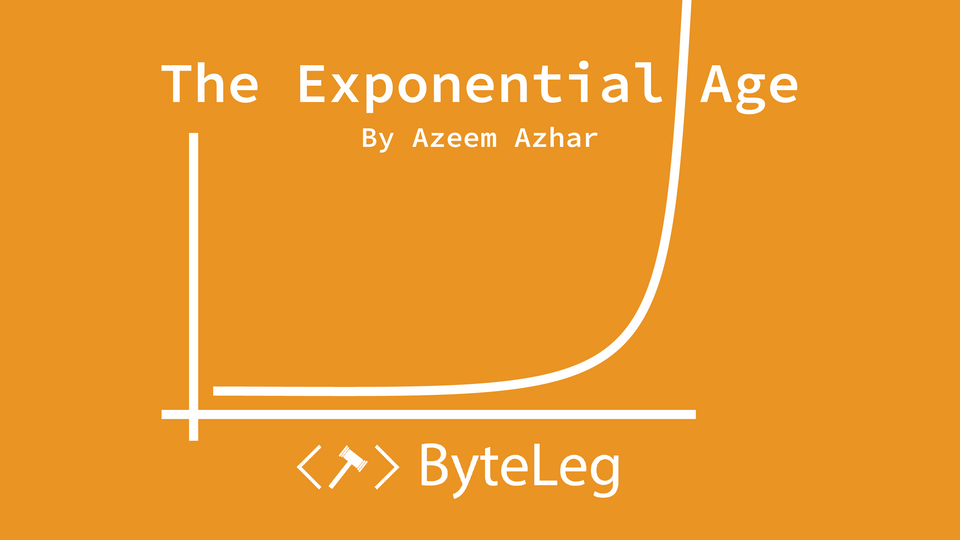
Azeem Azhar is a well-respected technologist and author based in London. He argues we are living through a time of unusually fast social change brought about by sudden advancements in technology. The Exponential Age was released on September 7, 2021 and focuses on today's societal and political decisions and how they may impact our future.

Technologies are built by people, and if we change how we think about technology, we change the shape of our future. General Purpose Technologies (GPTs) like electricity radically change how societies functions, and Azhar asserts we are about to see multiple GPTs hit their stride.
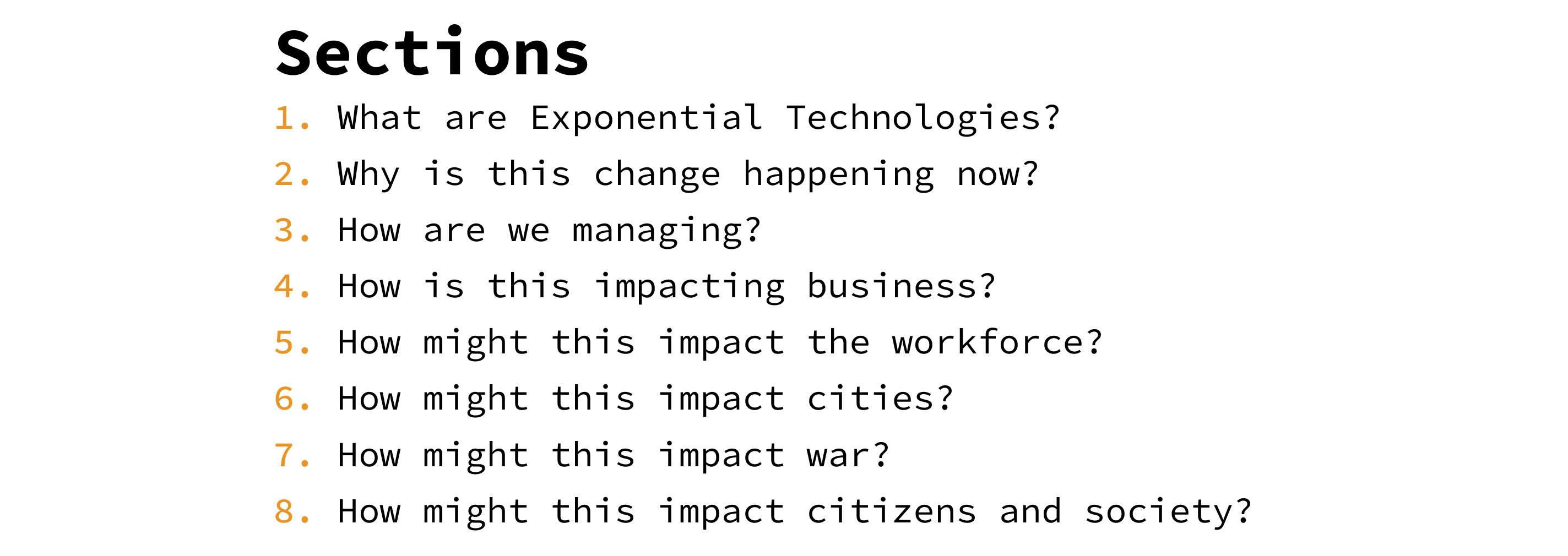

What are Exponential Technologies?
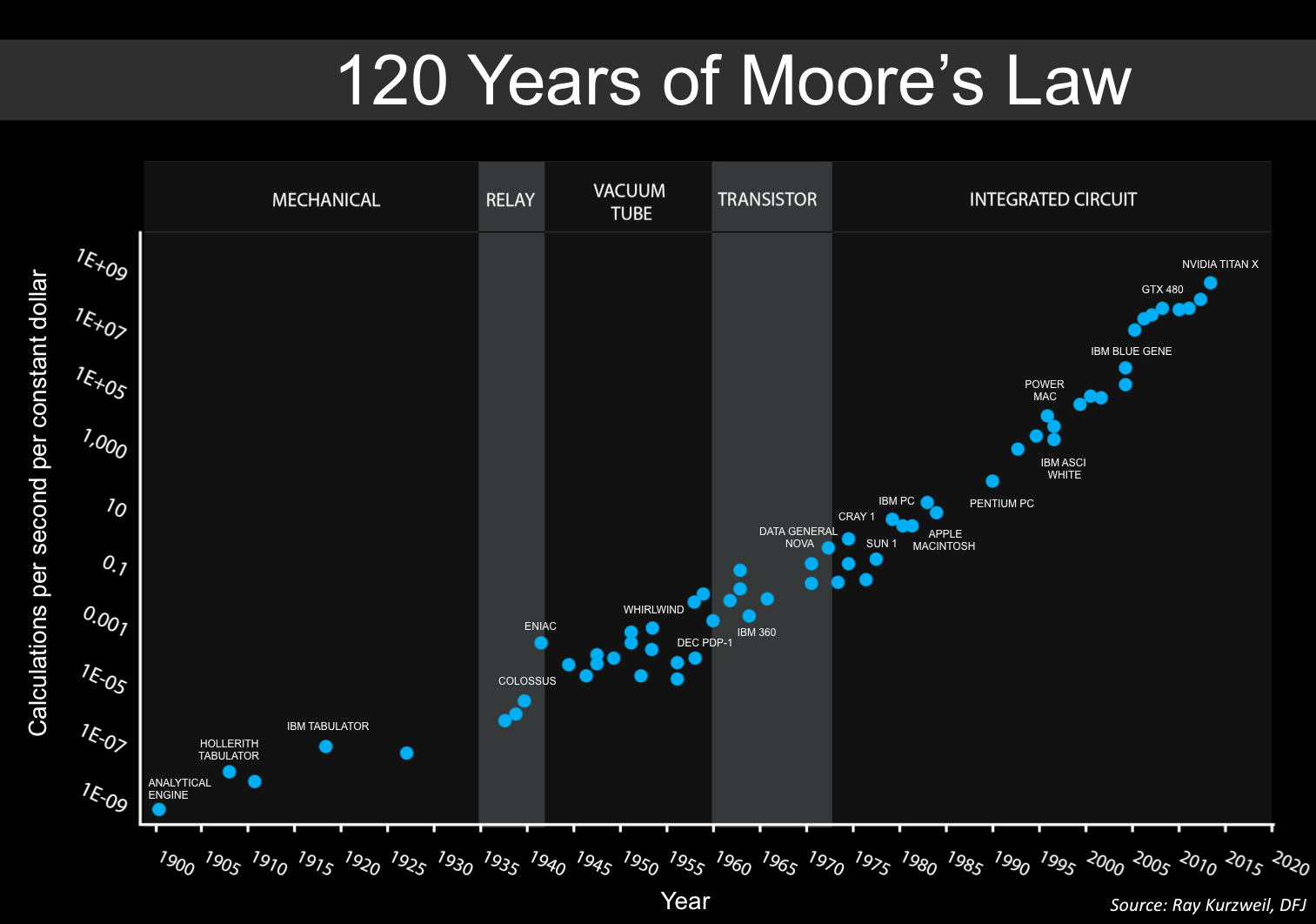
The semiconductor was invented in the 1960s and is a perfect example of how technology is both increasing in power and decreasing in price. Moore’s Law states that, for the same price, the speed of a chip would double every two years. Transistors are the on-off switches which computers use to represent the 0’s and 1’s of binary code. The more transistors a chip has, the faster it performs calculations. In 1960, Fairchild Semiconductor Corporation invented the first integrated chip, available commercially at $120 for 4 transistors. In contrast, Apple’s A14 chip – used in 2020's iPhone 12 – has 11.8 billion transistors and is estimated to cost $40.

While counterintuitive, the semiconductor's decline in price and increase in power is the perfect example of how exponential technologies get both better and cheaper. Azhar defines an exponential technology as a technology which improves at roughly a fixed cost, at greater than 10 percent improvement per year, for several decades.
The following article by Thomas Peyo does an excellent job explaining S-curves and exponential technology growth:
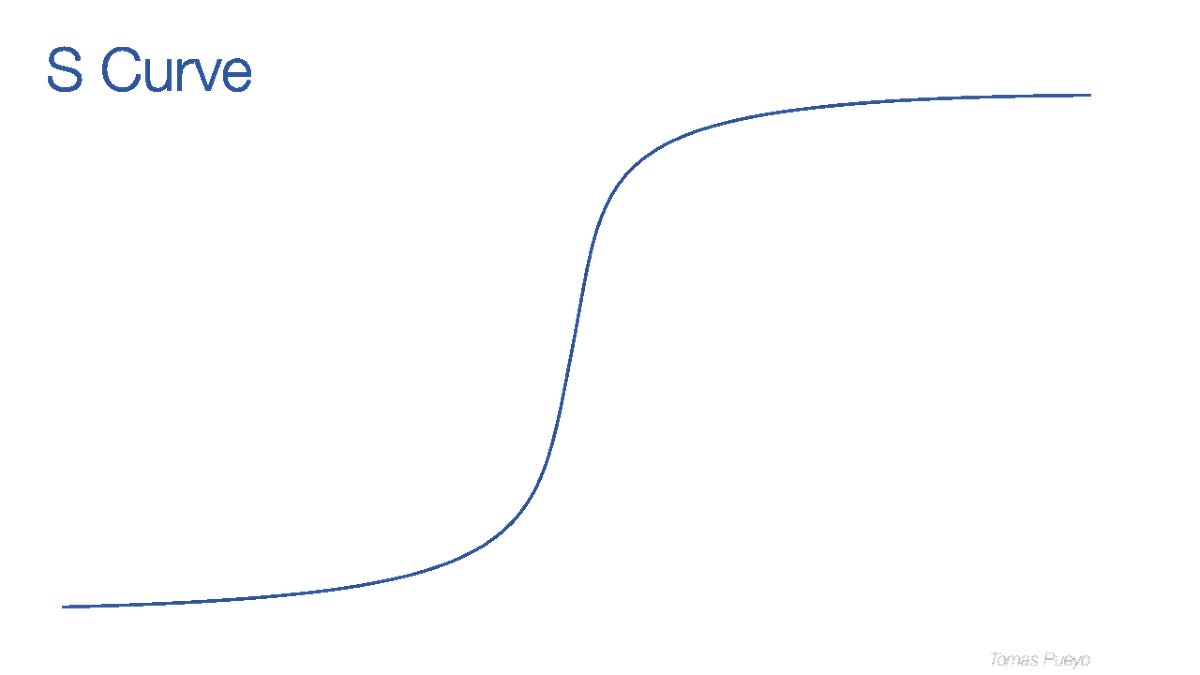
To explain the explosive growth of exponential technologies, Azhar points to the scientific idea of a phase transition, such as how water becomes steam. When applying heat to water, it will initially appear as if nothing is happening. However, after enough heat is added, an inflection point is passed, and the water begins to boil, converting to steam. In the same way, exponential technologies grow slowly, pass an inflection point, and then grow exponentially.
The world’s new digital infrastructure allows for more exponential growth than ever before. Products powered by – and sold over - the internet can spread like wildfire. Facebook amassed one million users in 15 months. In contrast, to have one million people purchase a new non-digital product would be a market event.
If four transistors cost $120 60 years ago, how cheap will AI be 60 years from now, in the 2080s? What does low-cost AI mean for society and what should we do today because of it?
Why Is This Change Happening Now?
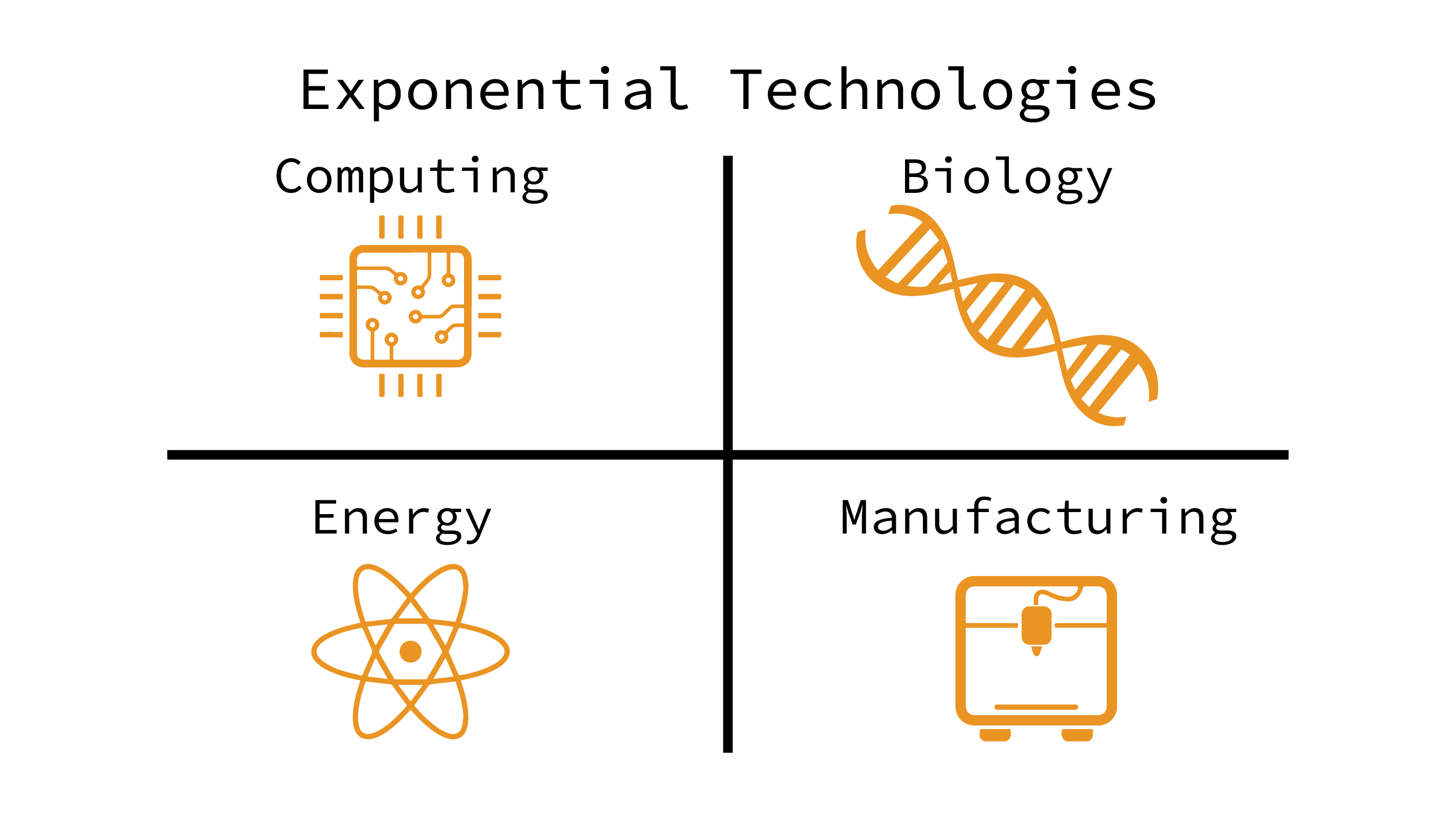
Azhar highlights four technologies which meet his definition of an exponential technology: computing, energy, biology, and manufacturing.

Not all exponential technologies are the equal. Some have few, if import, uses while others have general applicability. While the stirrup is an important invention, it is not a general purpose technology; the car is. Azhar assertsthree forces driving us into a new age of exponential technologies: Wright’s Law, combination, and network effects.
First, while Moore’s Law is important, it is a social phenomenon, not a law of the universe. If humanity stopped trying to improve the semiconductor, Moore’s Law would collapse. Instead, Azhar suggests Wright’s Law is more explanatory. (1) Wright’s Law contends that for every doubling in units produced, costs fall by a constant percentage. For Wright, this meant that for every doubling of aircraft produced, the cost fell by 15 percent. The more that’s produced, the better workers get at producing it. Wright’s Law is directly linked to output and can be applied to any technology.
Second, with so many possible GPTs around us, the technologies can be combined or learn from each other in interesting and explosive ways. For example, Azhar argues the combination of AI and solar panels could allow for effective grid stabilization. Further, new, smaller innovations (like the previously mentioned stirrups) can be combined in ways which reveal underlying truths and enable new creations.
Finally, the profusion of new trade and information networks allows for technologies to create previously impossible impact. For example, online academic resources like arXiv allow free access to pre-publication research articles. This access eliminates gatekeepers and allows researchers around the world to read the newest ideas, potentially sparking further innovation. Further, the invention of the internet and standard shipping container has allowed inventions to spread quickly to all parts of the world.
How are we managing the changes?
Not well.
Azhar argues humanity is 1) bad at predicting change, and 2) bad at adapting to change.
Amazon’s research and development budget was $36 billion in 2019. This investment into it’s narrow business – e-commerce and the technologies which make it function – allows Amazon to innovate rapidly and leave less aggressive competitors behind. While lawmakers have always been a lagging indicator, exponential technologies widen the gap, creating what Azhar calls an exponential gap.
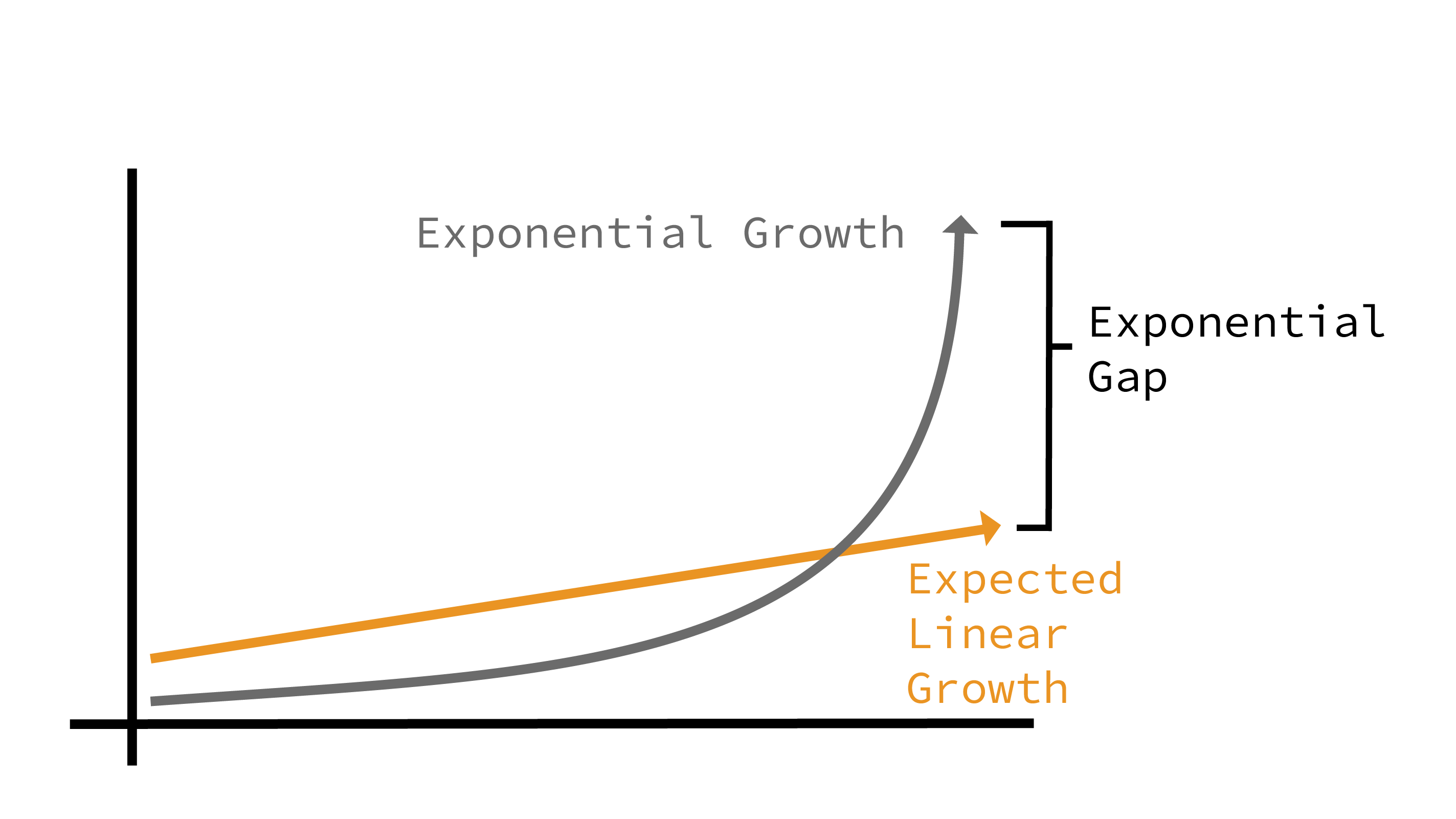
Azhar argues exponential gaps form because humans are bad at math. The majority of our experiences are liner, where small changes occur overtime. Exponential changes - which happen slowly, and then all at once - are not our typical experience. For example, well-informed people downplayed the advent of cellphones, the internet, social networks, and online shopping only for the technology to radically change our daily lives.
Institutions are intentionally slow and methodically moving (see A Time to Build). Congress passes several laws a year, but often only after each has had years of debate, hearings, and markups. Kodak’s 2012 bankruptcy is commonly understood as an inability to change. After inventing the electronic camera, Kodak believed the increase in photos would lead to an increase in photo printing, Kodak’s core business. Instead, the electronic camera commoditized and digitized photos in way which undermined the need to print them at all. Kodak failed to see the true potential of their invention, Kodak fell out of prominence and filed for bankruptcy in 2012.
In contrast to the slow moves of Kodak, hundreds of technology startups fail each year in Silicon Valley. For example, Katerra, a startup which aimed to revolutionized construction through prefabricated Lego-like building materials, closed its doors despite having 7,500 employees and over $2 billion in funding. Katerra thought the world was going one direction, leapt at the opportunity, only to discover the world took a different path.
Katerra demonstrates the dangers of picking winners and losers. Kodak demonstrates the dangers of failing to seize the initiative and its associated first-mover advantages. As a society, we need to thread the needle to receive the most benefit. Azhar argues that in the exponential age, governing institutions will cease to fit their purpose. Modernizing and revitalizing our institutions is both a great challenge and exciting opportunity.
How Is This Impacting Business?
One of the most important shifts in business today is the ability to scale quickly. Previously, the largest global corporations had surprising limiting factor on their growth – their size. The time and resources to coordinate a behemoth of a company pulls resources away from investments in growth. Coordination is expensive.
Companies built on exponential technologies reduce the size-drag through a number of innovations. They are:
- New networks of trade and information
- Platforms
- The Intangible Economy
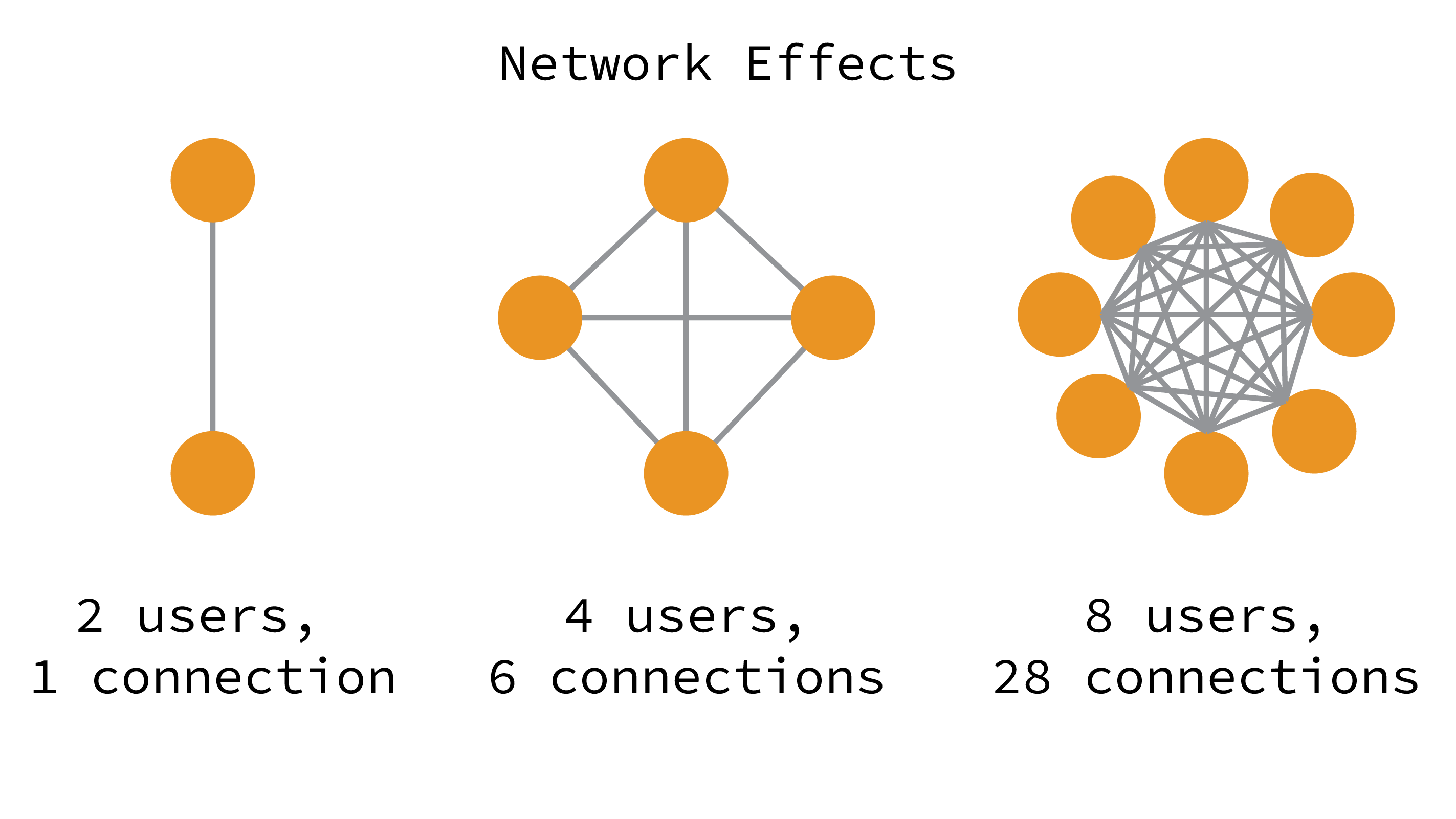
Network effects – where user growth leads to increased value for users - are one of the most powerful forces in the world, especially for internet-enabled companies. Importantly, networks effects can create lock in, imposing a cost to moving from one product to another. One example of network effects in action is Facebook – everyone has Facebook because everyone else is on Facebook. Further, Microsoft continues to dominate enterprise software because a large network uses and expects to use windows and the Microsoft Office Suite in a business setting. Network effects create a virtuous cycle for the businesses that can harness them.
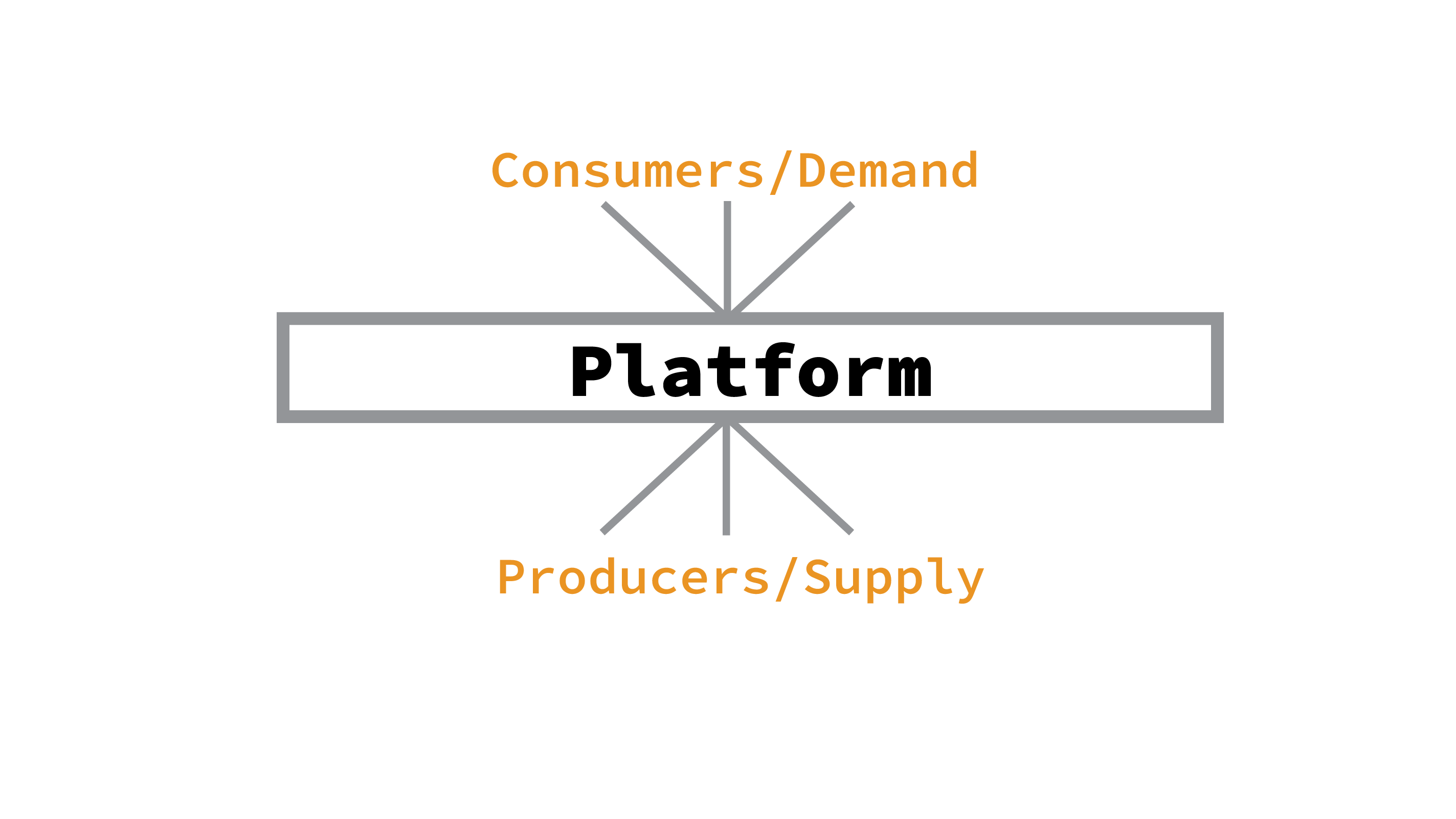
Platforms are companies which match consumers and producers via the internet, though this definition is contentious.(2) These companies, like Amazon or Uber, access their clientele through the previously built internet infrastructure. By selling over the internet, there is little limitation on scale – a platform can be coded once and used for a billion transaction. The only true barriers to growth are language and internet infrastructure, which may be why Google is investing heavily in undersea internet cables and automated translation technology.(3)
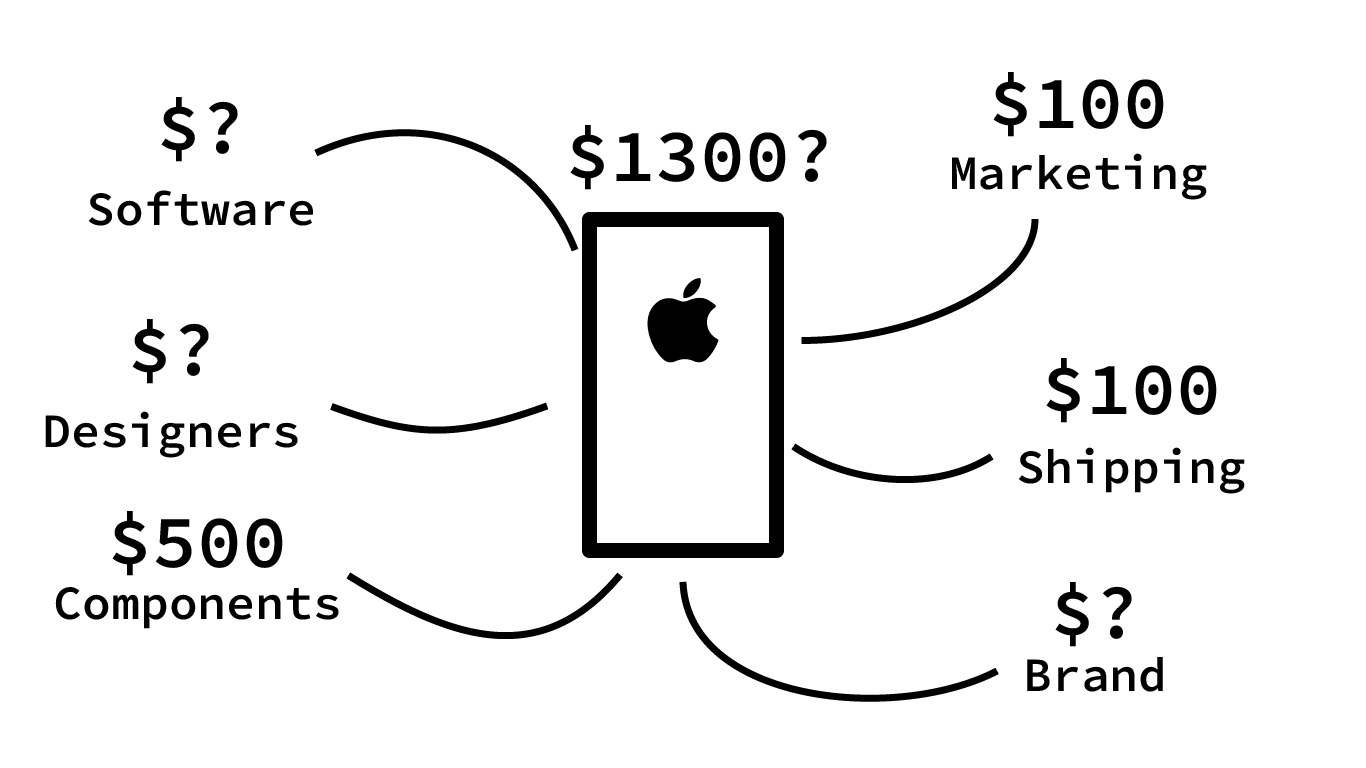
The intangibles of complicated modern technology are difficult to put a price on. For example, while the iPhone 11 Pro Max retailed for roughly $1,300 in 2019, the components inside only cost around $500. Where does this extra $800 in retail price come from? Exactly how many dollars per iPhone is invested into R&D, or used to pay software engineers, or to simply boost the value of Apple’s brand? For complicated, information-based products like an iPhone or enterprise software, it becomes very difficult to fix a dollar amount to the intangibles which make up the product.
How Might This Impact The Workforce?
Azhar sees two trends for the workforce 1) automation, and 2) growth of the gig economy.
While a bit old, I find the following video helpful in explaining why many on why are concerned about the future of automation:
Azhar takes a more positive view of impact of technology on the future, similar to Dr. Schwab in the Fourth Industrial Revolution. He argues GPT-level technologies have always led to an increase in the total number of jobs in the economy. The shift from the horse to the car may have killed horse-related jobs but it also created mechanics and other car-related professions. If all previous GPTs have worked this way, why should AI or 3D printing be different?
Instead of focusing on the total number of jobs, Azhar wants to focus on the perilous transition between paradigms. If handled poorly, millions could be put out of work with no real pathway to gainful employment. Azhar notes the phrase “it all worked out in the end” can gloss over the pain and suffering of millions. If one accepts the long term trend is positive, alleviating medium-term impacts becomes the priority.
One large trend in the global economy is towards hyper-valuable companies with fewer workers. One critical insight of Azhar’s is that when people lost their jobs to automation, it will unlikely be because they were replaced by a robot – it’s because their firm went bankrupt competing with an automated competitor. If Company A operates an automated warehouse for $1 million, and Company B operates a human-first warehouse for $5 million, Company B will not be cost competitive. Employees are unlikely to see mass lay offs following the adoption of a new technology. Instead, Azhar argues that companies who lean into automation will find new uses for their employees and dominate markets. Despite intense automation, Amazon continues to add thousands of employees.
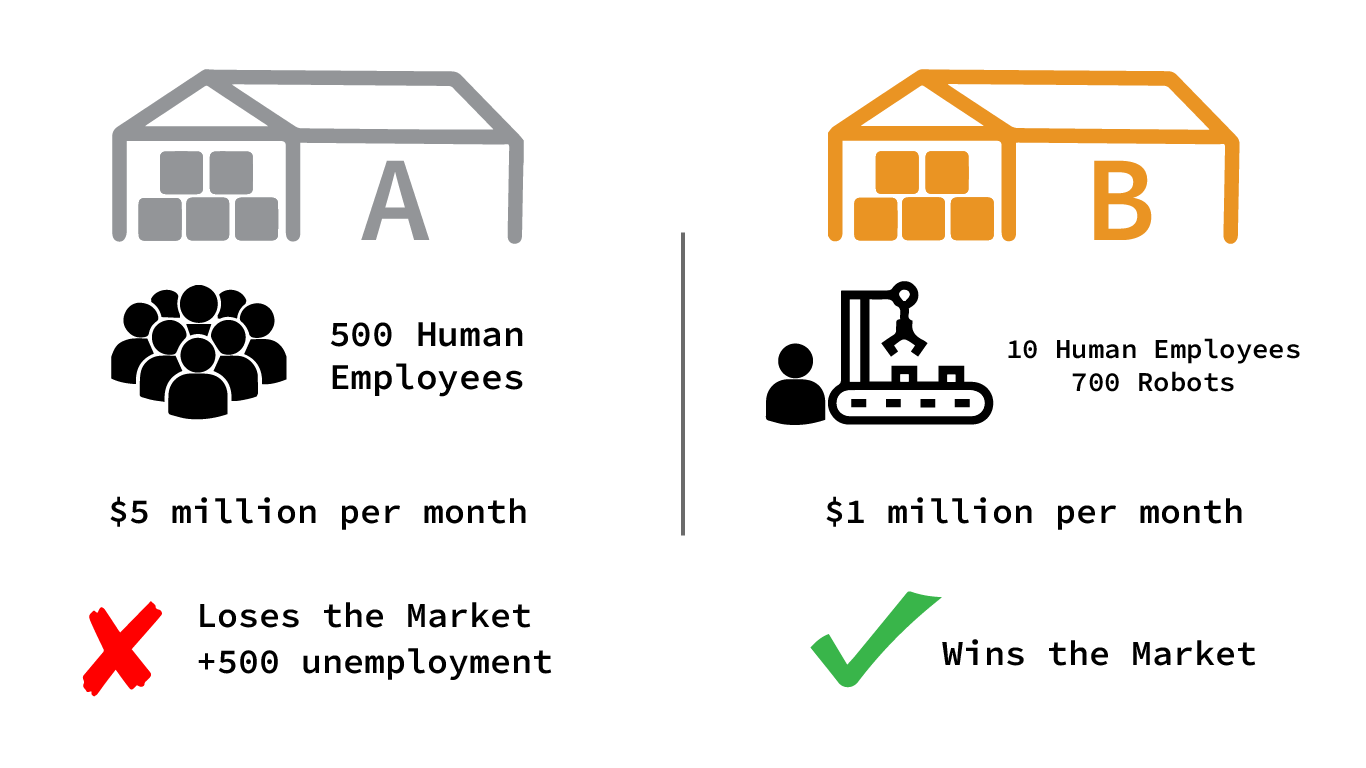
Azhar argues the more transformative technology for the workforce will be emergence of the gig economy, which is a more efficient way to allocate the workforce and is likely to become the new work paradigm. Instead of taking exclusive, long term contracts with one employer, Azhar argues people will find gig work similar to how Uber matches drivers and riders. When combined with remote work, Azhar asserts a new system will emerge. Doctors are in short supply in some regions while in others don’t see enough patients to keep their doors open. Azhar argues a more flexible gig economy will allow a doctor in rural America to take a job as a primary care physician in rural India, filling half their day with patients in India and the other half with patients in rural America.
One major issue Azhar highlights is the growing distinction between knowledge workers and the rest of society. He argues this creates an uneven power dynamic between managers and their workforce. Azhar argues the modern 9-5 workweek was historically created by Unions and that a new wave of unionization will be needed to create a similar balance in a gig-only economy. For example, Azhar highlights the distinct differences between Facebook corporate employees - whose average salary is $240,000 and whose office is filled with bean-bag chairs - and contract content moderators – who average $30,000 in a dimly lit cubicle in a strip mall.
How Might This Impact Cities?

Famously, Apple includes “Designed in California. Assembled in ____” on it’s products. As globalization has occurred, complicated products have supply chains which span multiple countries. Through NAFTA, the WTO, and other bilateral trade agreements, barriers between nations have declined. The Schengen Zone in the E.U. is an excellent example of this, where citizens of any member nation can permissionlessly travel, work, and live in any of the E.U. nations. (4) For many globalists, the goal has been to increasingly integrate the world until national borders totally fade away.
Azhar argues against this unitarian vision, instead asserting globalization lost its luster in the wake of the Great Recession.b Instead, he asserts technology will lead us to a new age of localism.

One driver of re-localization will be vertical farming. For many decades, Americans have helped feed the world as the largest exporter and producer of food. Wheat from Washington is often eaten in Brazil or China. Vertical farms, which produce more food per acre than traditional farms, no longer need the vast amounts of land to grow food. Vertical farms can be much closer to the cities and populations they feed, reducing shipping costs for meals.
The most substantial example is advances in additive manufacturing (3D Printing). Schematics for a 3D printer can be designed by anyone in the world and produced anywhere in the world. As 3D printers become more advanced and proliferating around the world, there will be little need for massive global supply chains. In this vision, automated 3D printing of products close to home will eliminate the shipping and labor costs of production.
Why pay a Vietnamese worker to build a product and ship it to a consumer in America when you can instead use a local 3D printer? As we’re seeing in 2021, each step in a supply chain is a step which can add costs and delays.
In a world that's re-localizing, it begs the question of "localizing where?"Azhar labels this world as “spikey” where most value is created by knowledge workers in cities throughout the world. As automation takes effect, highly talented knowledge workers will be in high demand, and the largest cities will be full of them. Similar to San Francisco/Silicon Valley, massive amounts of wealth will be generated in and for cities, potentially leaving second tier cities and rural areas behind.
Azhar argues the differential and concentration of wealth into the hands of cities will lead to increased tensions between cities and nations. Why should a California tech millionaire be taxed for the needs of someone in North Dakota? Azhar argues this will push local politicians to claw power back from federal regulators towards the local.
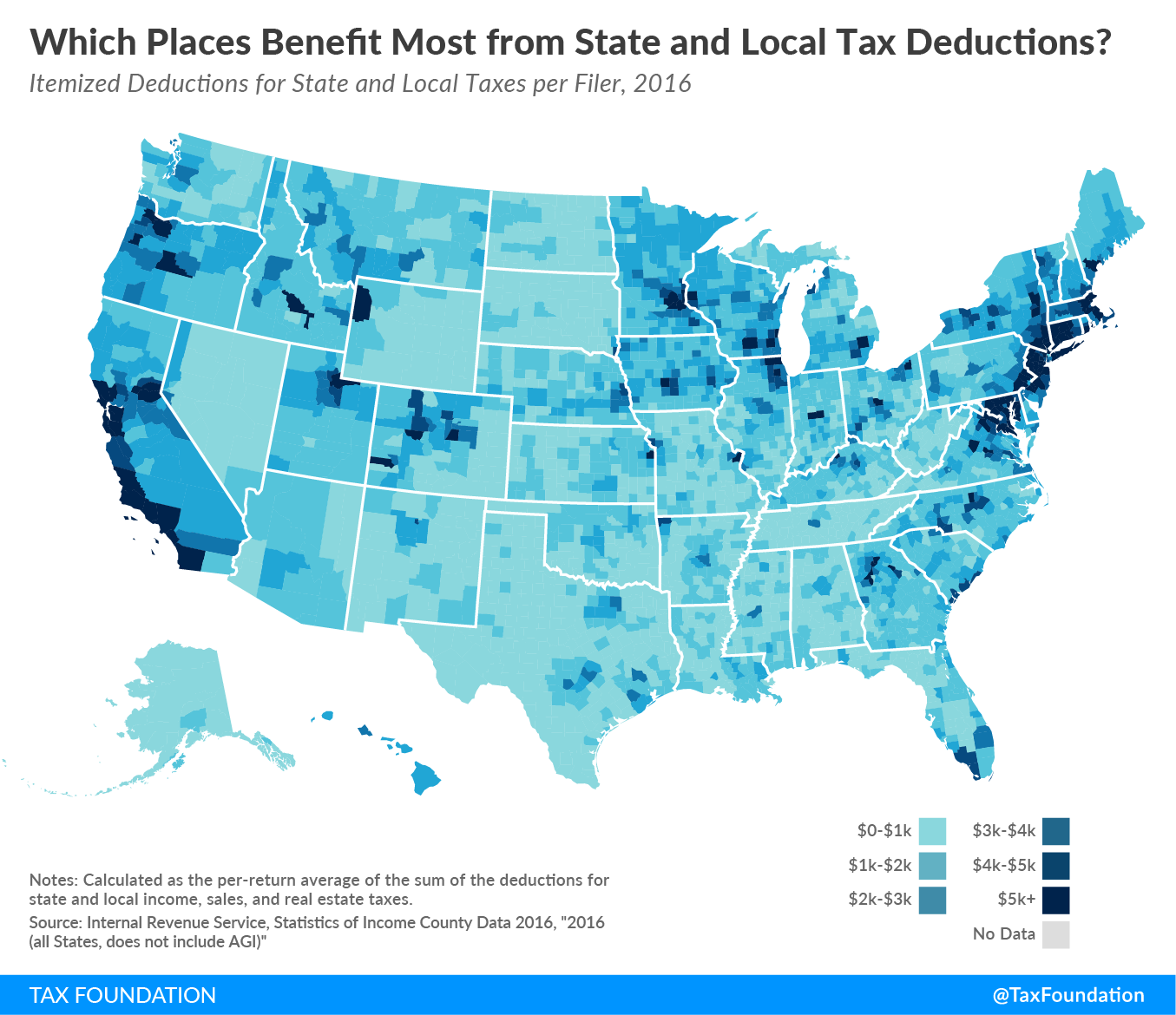
The current debate over the state and local tax (SALT) deduction is an excellent example of this. In the 2017 Tax Cuts and Jobs Act, deductions for SALT deductions were capped at $10,000. (5) In states like California, where state and local taxes are high, this means the wealthy pay high state taxes and high federal taxes. Removing the SALT deduction cap would mean wealthy Californians would pay high state taxes and low federal taxes. (6)
Azhar pushes for a return to the federal system, where - outside of a few basic principles - states and localities have the power to be the laboratories of democracy.
How Might This Impact War?

Azhar argues exponential technologies have outstripped our rules governing conflict and war, and that we need to update these frameworks as quickly as possible or risk a disastrous outcome.
In 2007, Estonia was hit with a major cyber attack attributed to Russia. Estonia is a member of NATO. Did this cyber attack require a response by all NATO countries? What does a proportionate response to such an attack look like? Further, are disinformation propaganda campaigns conducted by our enemies within our borders a war provocation? What is the proper response when attacked by propaganda campaign?
Autonomous weapons, drones, and robotics are another concern raised by Azhar. Drone prices have plummeted to meet consumer demand. A missile from a $40 million predator drone is comparable to a $400 drone equipped with explosives. Could a large swarm of explosive-armed drones halt the flight operations of a $13 billion aircraft carrier?
Another important possibility is fully autonomous weapons systems. Our current legal framework assumes a human as making the final call for every weapon and can be held accountable. Is there a future where an AI can launch a pre-emptive strike against terrorists with significant conventional weapons? How does facial recognition play into weapons? How accurate would the correlation need to be to take lethal action?
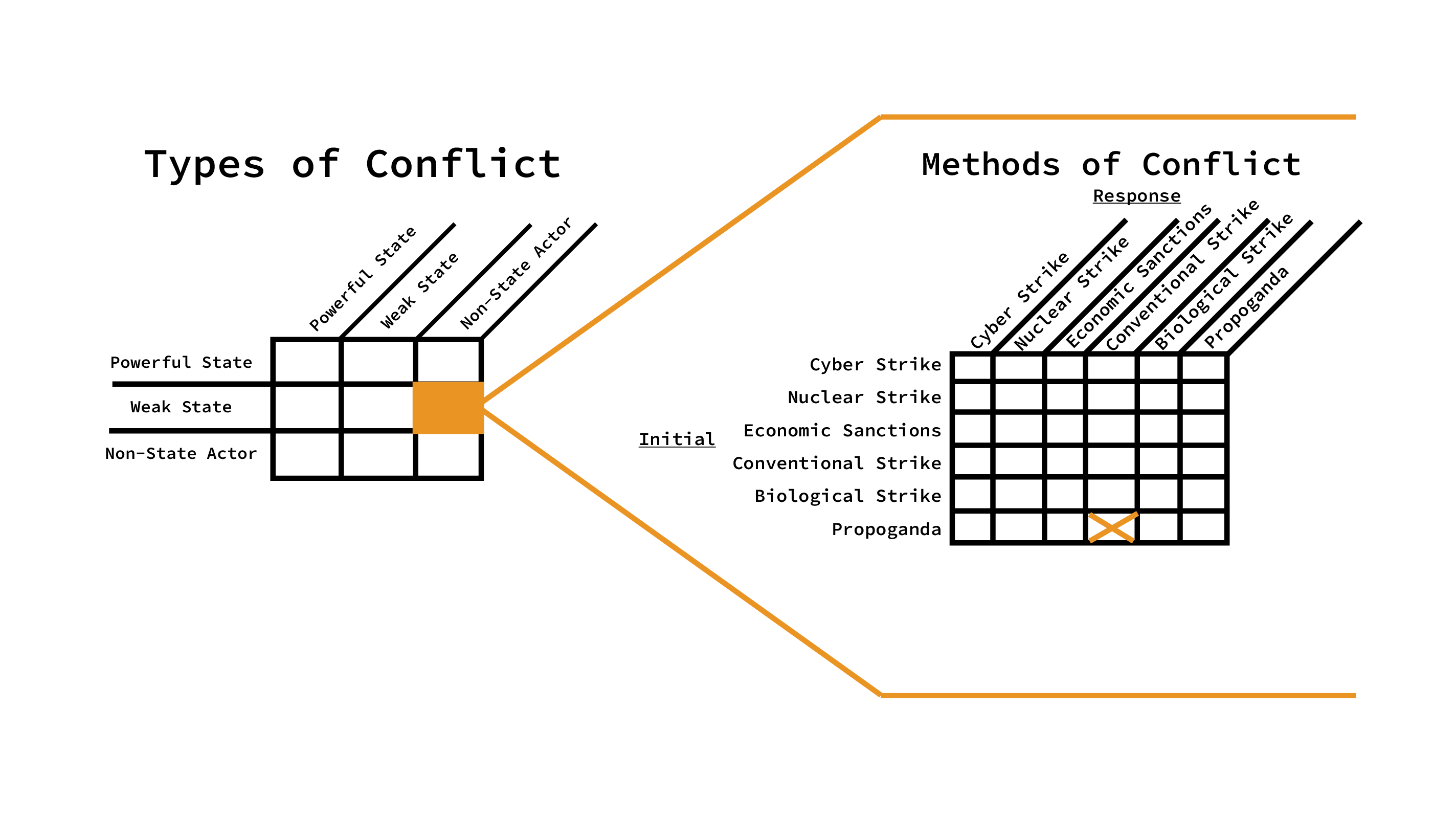
Exponential technologies increase both the types of actors in a conflict and the methods of waging conflict.
Exponential technologies increase the types of battle (powerful state:non-powerful state, powerful state:powerful state, non-powerful state:non powerful state, non-state:non-powerful state, non-state: powerful state) and the attack surface: cyber, cheap drones, etc.
Azhar argues we must develop new de-escalation tactics, establish new norms around warfare like a digital Geneva convention, and work to both increase our defenses and limit our attack surface.
How Might This Impact Citizens and Society?
One area Azhar is most concerned about is the new power corporations like Facebook and Amazon have over our society. Azhar – who was born in the U.K. and worked at the World Economic Forum– takes a very European approach to government and regulation. He is very uncomfortable with private actors taking actions outside of the rule of the state. This state-first approach, especially as it relates to freedoms like speech and press, stands in contrast to America’s individual-first approach.
In general, Europeans see the state as the only venue for collective problem solving, while Americans are more comfortable with a limited government that allows private actors like churches or businesses to solve collective problems. As an American, I have fundamental disagreements with Azhar about the role the state should play in the future of technology. While I agree with many of the problems Azhar outlines, I firmly disagree with his solutions, which focus on outcome-prescriptive government action.
Azhar argues the growth of exponential technologies are concentrating power into the hands of few, private actors. For example, Azhar argues technologies are not neutral platforms, but encode the values and assumptions of the software engineers. As this relates to the Chinese Communist Party exporting authoritarianism and censorship to the world, I agree. However, as this relates to government control of what types of software can be written, especially by a domestic political party, I firmly disagree. Azhar argues that without government intervention software engineers will become de facto policymakers, and that the government must seize this power back. A solution where the government tells its citizens what they can or cannot write or think rubs most Americans the wrong way.
The role of policymakers is to provide guardrails which ensure a level playing field for private actors, not to compel certain outcomes to ensure software engineers act in the public interest. Policymakers should ensure Americans are building the foundations of the internet, not dictate how those foundations should be built.
Instead of the state seizing power and censoring speech, the state should require transparency to ensure markets are truly competitive. Twitter’s size is not an inherent problem so long as they increase consumer welfare and do not engage in unfair or deceptive acts or practices. Private companies should be allowed to act in accordance with their conscious so long as they do so in a transparent way and consumers have a reasonable alternative.
Another aspect highlighted by Azhar is the danger of data collection. He says that the power over others’ privacy is the quintessential power in the digital age. As the digital and physical worlds increasingly overlap, each of us will exist as more than just our physical, fleshy selves; we will also have a digital self, a digital footprint. Today, it is often cost-efficient for companies to store unnecessary data than to design for privacy.
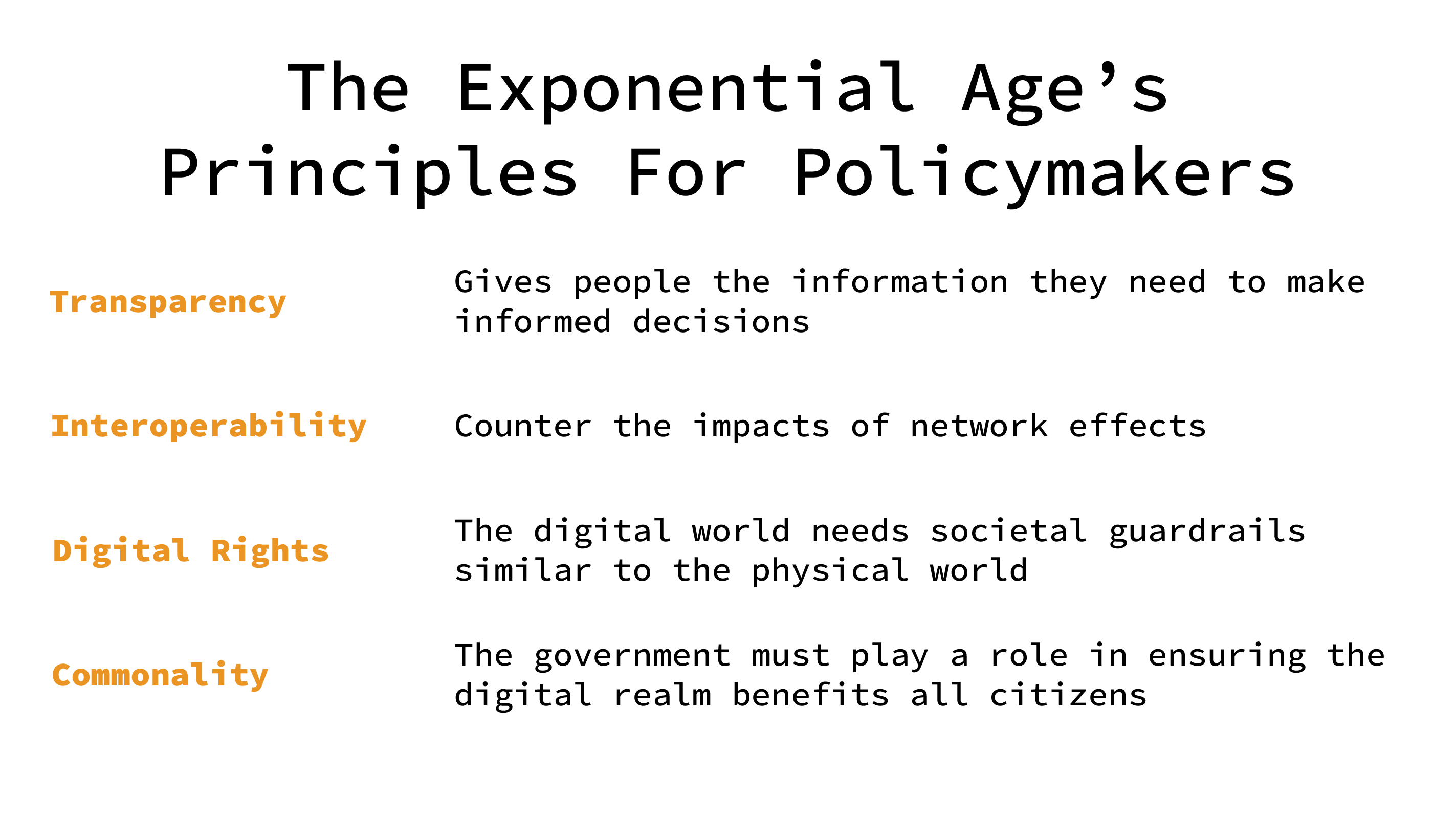

Wrights Law
The Exponential Age was the first book I’ve read which mentioned Wright’s Law, a theory I find fascinating and explanatory. In AI Superpowers, Kai Fu Lee talks about the consumer electronics industry in Shenzhen, China. The above video demonstrates how concentrated production of a good leads to increased skill. In Marysville, Washington – my home town – Boeing is a major employer, leading to a high concentration of aerospace engineers and expert metal workers in the region.
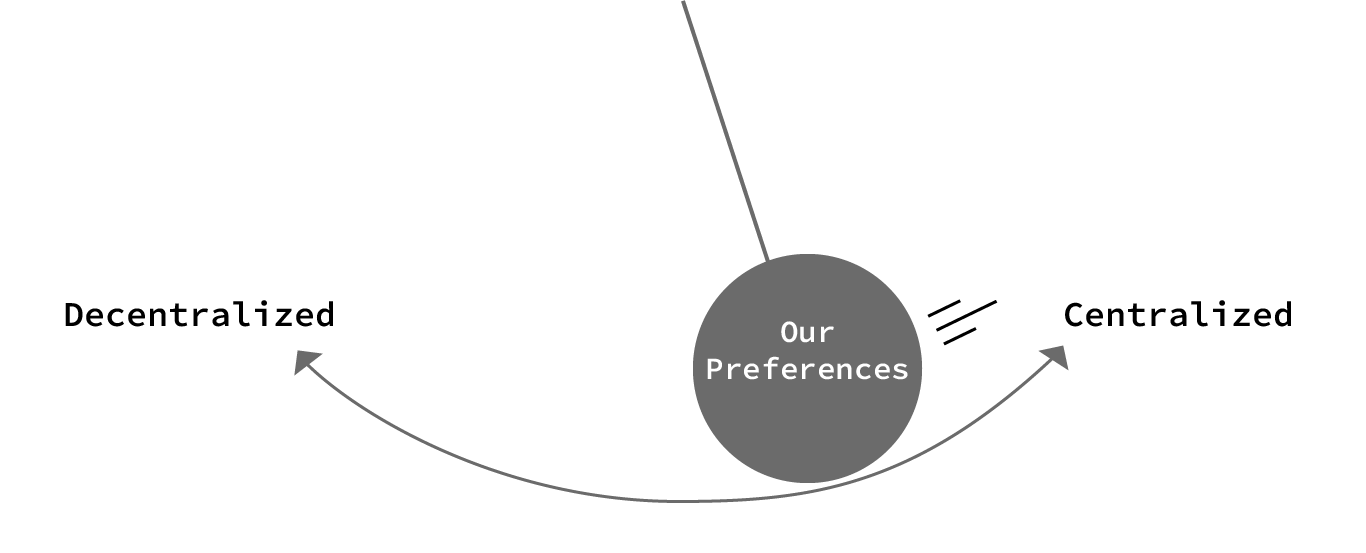
The Gig Economy and the Nature of Work
While I agree with Azhar that many industries will transition to a platform-based gig economy, I have a difficult time seeing a total paradigm shift towards this model. Firms continue to provide stability and value to workers who are willing to sacrifice flexibility. Substack and Twitch work for some, not for all (7). What happens for gig workers when there is no demand for their work? Uber is not available in most of rural America because the demand doesn’t support it. While Azhar would likely argue the internet is large enough that gig employees would always have demand for their skills, but I’m skeptical. People need to pay rent and buy groceries, and I think many will still decide to sign stable contracts to ensure they can do so.
While the pendulum may be swinging towards platforms and more flexible work patterns, I'm sure it will swing back.
Institutional Change
When discussing the slow nature of institutional change, Azhar highlights the work of Kathleen Thelen, an MIT Political Science professor. Prof. Thelen lays out three ways institutions change:
- Layering – when new norms are built on top of old norms
- Drift – where an institutions keeps its policies and norms the same despite a changing world
- Conversion – when an institution takes an old method of doing something and deploys it in a different context.
As Congress and other large institutions look towards the future, they play a dangerous game around adopting technology too quickly or falling behind. As Yuval Levin demonstrates in A Time To Build, it feels as though many of our institutions fall into the drifting category. I'd be interested to see what a Layering or Conversion plan for Congress would look like.

We shape our buildings; thereafter, they shape us
Packy McCormick of Not Boring has an excellent essay on this topic, but I’ll summarize the idea here. In 1943, the British Parliament was debating if they should rebuild their chamber in a horseshoe or a more adversarial rectangle. In the adversarial rectangle, changing sides leaves no room for questioning – you’re with us or you’re against us. This confrontational design choice underscores distinctions between the British and American variants of democracy. While Parliament is strictly majority-rule, Congress is designed for compromise, which their designs reflect. Packy notes user interfaces and other design choices by software engineers make have the same power, especially as we spend more time in digital spaces.
This highlights the importance of America winning the future and enshrining democratic values in the technology which will define the future. It’s also part of why I’m suspicious of TikTok, and while I know some will call this a boomer take, the values baked into a technology are critical. For example, the Renwick Gallery in D.C. is focused on creating photogenic art collages to catch the attention of social media-focused Gen Z. (link) I’m concerned about a future where democratic freedoms (press, expression, religion, etc.) are not enshrined in the technology which shapes what we see and how we see it.

The Decoupling of Bits and the Atom
On an episode of The Realignment Podcast, Antonio Garcia Martinez – author of Chaos Monkey’s - argues the most revolutionary shift in the world is the decoupling of information and the physical world. In the past, the fastest anyone could communicate information was measured in days due to the time required to send/receive physical mail.
The question “where are you” is an entirely modern concept. Prior to the invention of the internet, letters had to be mailed to a specific address and phone calls directed to a specific land-line phone number. To contact someone, you had to know their approximate location; this is no longer true today. As the speed of information has increased, your physical location could have no connection to the work you are doing. Tele-education during the COVID-19 pandemic demonstrates how people no longer need to be physically present in a classroom to receive an education.
The physically geography of a person no longer dictate the physical, emotional, or intellectual state of a person. Extrapolating this trend to its conclusion creates a world that could be either utopian or dystopian. On one hand, echo-chambers are easily be formed, insulating people from ideas and situations they don’t wish to confront. Without the need to confront new ideas, true progress and consensus would be impossible to achieve. At the same time, people can find rich fulfillment from large communities around a niche topic.
Further, centralized control of deeply silo’d communities create a situation ripe for exploitation and manipulation. Could a 1984 style Ministry of Truth give one version of a story to one audience and the opposite to another? This challenge is deeply intertwined with the idea of Web3, which you can learn more about by clicking below:

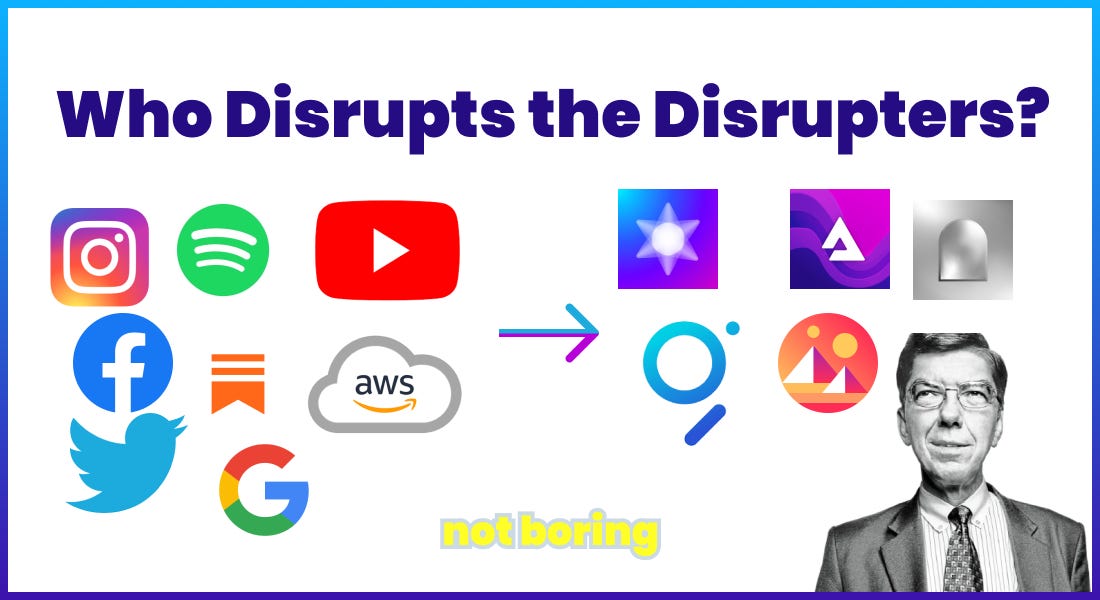
Crowd sourced
One interesting note Azhar highlights is a linguistic change from crowd-sourced to the gig (or creator or passion) economy. Instead of talking about crowd sourcing solutions, startups talk solving problems with a platform. Kickstarter is no longer crowd-sourcing, it's a platform which connects creators to their fans.
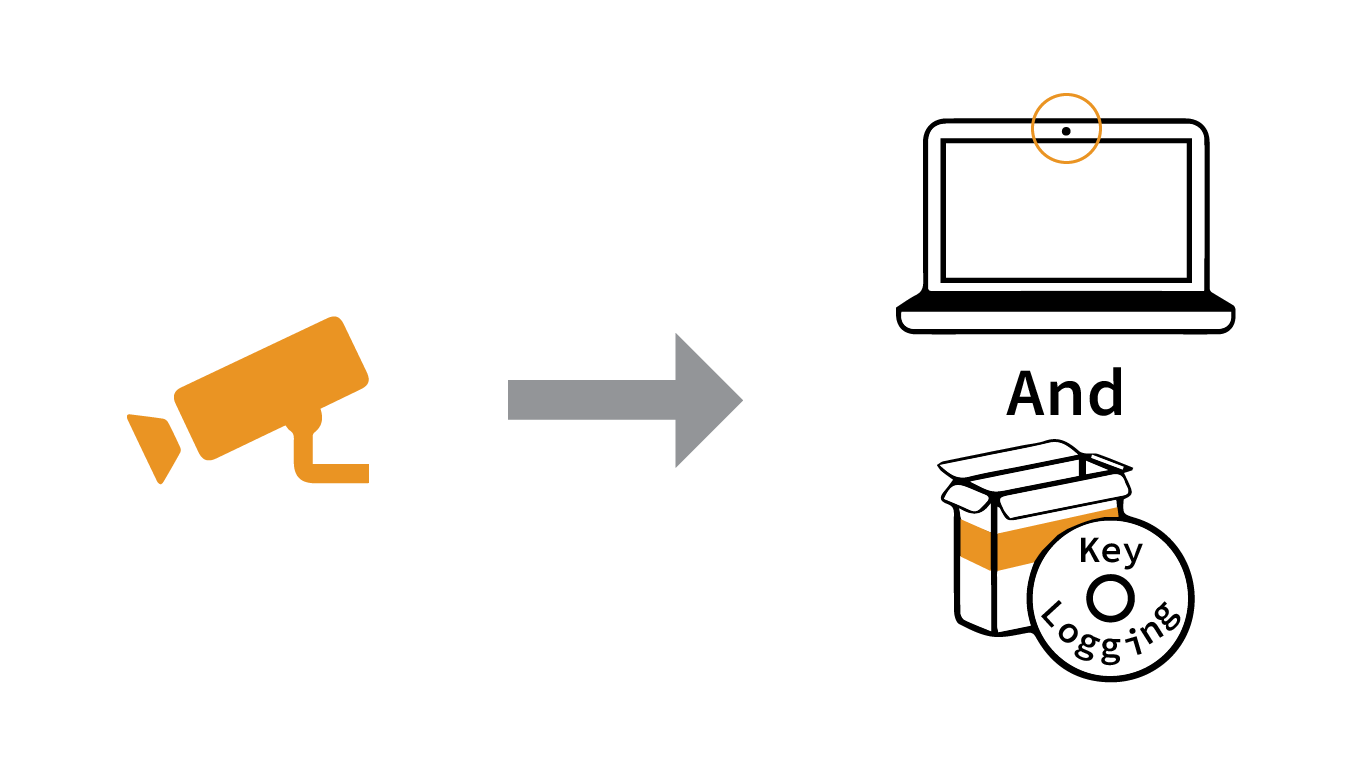
Algorithmically Managed Productivity
One interesting issue raised by Azhar is algorithmic management, especially as it relates to productivity. Software is much cheaper than human middle managers, creating incentives to flatten hierarchies and replace managers with algorithms. In the future, a manager could have 1,000 direct reports and rely heavily on algorithms to manage the day-to-day operations of a team.
For the past year, schools around the world have administered tests virtually using key loggers, eye trackers, and other methods of surveillance. As managers grow distant from their direct reports, it's possible employees could be promoted or fired based on how often they glance off their screen, or how many words per minute they can type. When an algorithm becomes your boss, there is little recourse.
Human-centered value
One possible future is one where 3D printers and AI are commodified to such an extent that basic human needs are accounted for. When any product can be produced and delivered by machines for a few dollars of electricity and materials, many of humanity's problems will be solved. William Gibson famously said “the future is already here – it’s just not evenly distributed.” When all basic necessities can be produced cheaply, marks of status will shift to artisan human-crafted goods. Rich people wont have perfectly designed plates for their food, they’ll have rough, clay plates made by a human. We already see this trend today - Hersey's chocolate is cheap and machine-produced while artisan chocolate is expensive and made by hand. In a world of abundance, hand-produced artisanal goods will become luxurious signs of status and wealth.
If you've made it this far, thanks for reading! The only real metric I'm tracking right now is newsletter subs, so make sure to subscribe below.





